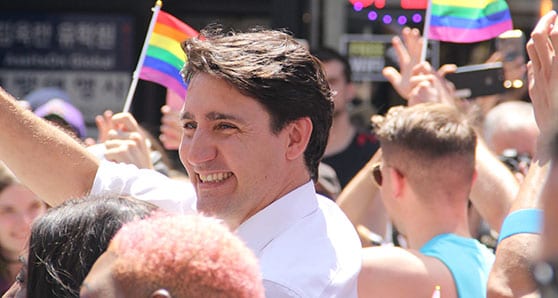After the 2011 debacle under Ignatieff, the Liberals abandoned rebuilding a party in disarray for the easy path: Trudeau’s shallow appeal
The Liberal Party of Canada’s decision to rebuild itself after its historic defeat in the 2011 election by relying on Justin Trudeau was a serious miscalculation. Rather than undertaking the hard work of political renewal – addressing voter apathy, reconnecting with its grassroots, and modernizing its infrastructure – the party chose a shortcut. Banking on Trudeau’s charisma, family name, and media appeal, the Liberals prioritized short-term electoral gains over rebuilding a party in disarray.
While this approach delivered a temporary victory, it left the party vulnerable, with growing questions about its long-term viability as a political force.
Under Trudeau’s leadership, the Liberal Party not only failed to rebuild its identity but appears to have fundamentally abandoned liberalism itself. Core principles such as individual freedom, institutional accountability, and balanced governance – hallmarks of liberal democracy – have been replaced by a coercive progressive agenda rooted in identity politics and symbolic gestures.

 An overreliance on Trudeau’s “charisma” has left the Liberal Party hollow. |
| Recommended |
| Justin Trudeau’s legacy a catalogue of failures, and embarrassments
|
| How Justin Trudeau failed Canada
|
| Canada’s leadership vacuum fueling a national crisis
|
What was once a party that united Canadians under the banner of centrist pragmatism has transformed into one that alienates traditional supporters in favour of ideological rigidity. This raises a troubling question: Is the Liberal Party even “liberal” anymore?
The Liberals’ collapse in 2011 was more than just a loss; it was a moment of reckoning. Reduced to just 34 seats and relegated to third-party status, the party had reached its lowest point in history. For decades, the Liberal Party had been considered Canada’s “natural governing party,” uniting diverse regions and voters under a centrist banner. But by 2011, it was clear the party had grown complacent, weakened by leadership missteps, voter disillusionment, and a failure to adapt.
That moment demanded bold leadership – a commitment to grassroots rebuilding, a renewed policy platform, and a clear vision for Canada’s future. Instead, party leadership turned to Justin Trudeau, a young and inexperienced figure whose personal brand promised the allure of quick success.
Initially, the gamble seemed to pay off. Trudeau’s sunny optimism and progressive rhetoric propelled the Liberals from third place to a majority government in 2015. However, the revival was not rooted in structural renewal or coherent political strategy; it was tied almost entirely to Trudeau’s personal appeal.
As his leadership faltered, so too did the party’s credibility, exposing deep cracks in its foundation.
Trudeau’s tenure has been marked by ethical controversies and broken promises. Scandals such as the SNC-Lavalin affair and the WE Charity controversy, among many others, tarnished his reputation for transparency and accountability, eroding public trust in the Liberal Party. His government abandoned key campaign pledges and struggled to address critical issues like housing affordability, health care, and inflation – leaving many Canadians disillusioned with his leadership.
These failings were not merely individual missteps but symptomatic of a deeper problem: a party that had lost its moral and ideological compass.
More fundamentally, Trudeau’s leadership has redefined the Liberal Party in ways that undermine its very essence. By abandoning liberalism for progressivism, the party has sacrificed its foundational values for a rigid ideological agenda. Traditional liberal ideals – respect for individual autonomy, open debate, and policy grounded in evidence rather than dogma – have been cast aside.
Instead, the Liberals have embraced performative progressivism, focusing on symbolic policies and identity-driven narratives that alienate the very Canadians they once sought to represent. This transformation has left many wondering whether the Liberal Party can still claim to be the centrist force that shaped Canadian politics for much of the 20th century.
The consequences of this transformation are now painfully evident. The Liberal Party, once defined by its ability to adapt and unite diverse interests, has become overly reliant on the Trudeau brand. With no clear successor or vision for a post-Trudeau era, the party risks sliding into irrelevance.
Its failure to rebuild after the 2011 election defeat has left it hollow, lacking both the grassroots infrastructure and ideological clarity necessary to sustain itself as a dominant political force in Canadian politics.
The Trudeau era may ultimately be remembered as a cautionary tale – a time when the Liberal Party prioritized power over principle and charisma over substance. By abandoning its grassroots, failing to modernize, and embracing a progressive agenda at odds with its traditional liberal values, the party has jeopardized its credibility and alienated core supporters.
Worse still, by rejecting liberalism itself, the Liberals risk becoming a hollow shell of their former identity, disconnected from the values that once made them Canada’s “natural governing party.”
If the Liberal Party hopes to recover, it must do more than simply replace Trudeau with another leader. It must re-engage with its members, rebuild its grassroots, and rediscover the liberal values of individual freedom, accountability, and practical governance.
Only by offering Canadians a principled, pragmatic vision that addresses pressing issues like housing, inflation, and health care can the Liberals hope to restore their credibility. Otherwise, the Liberal Party risks fading into irrelevance – not because of electoral defeats, but because it abandoned the ideals that once defined it.
Explore more on Trudeau government, Trudeau scandals, Liberalism, Coercive progressivism
Troy Media is committed to empowering Canadian community news outlets by providing independent, insightful analysis and commentary. Our mission is to support local media in building an informed and engaged public by delivering reliable content that strengthens community connections, enriches national conversations, and helps Canadians learn from and understand each other better.
